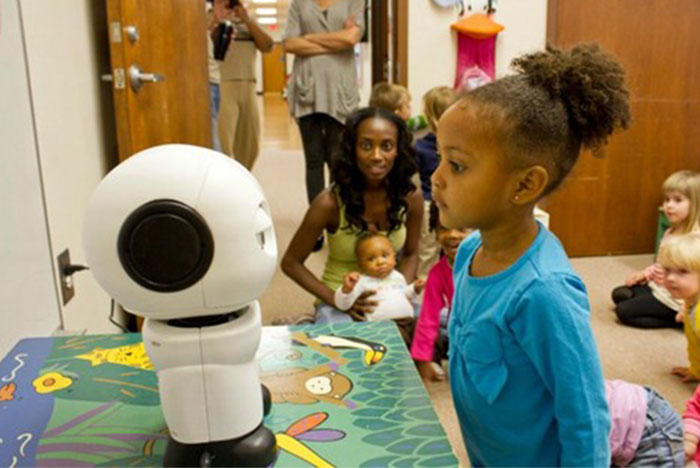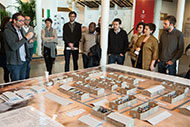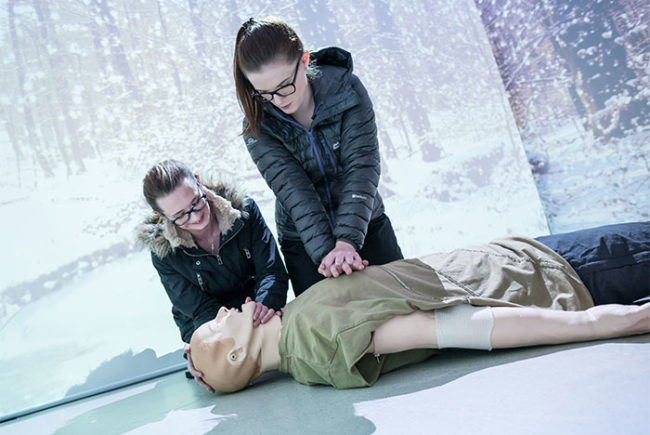
The 3-D printed Maki Robot is being used in a pediatric study to aimed at relieving stress in patients.
Hospital brings in robots as welcome distraction for kids
Children’s Hospital Los Angeles is running a clinical study to identify the most effective communication with young patients, and one of the methods being tested uses a small robot helper called IVEY. According to PC magazine, Maja Mataric, Ph.D., head of the University of Southern California’s Robotics and Autonomous Systems Center, adapted the robot for the children's hospital from the open-source Hello-Robo MAKI prototype made by Peachybots LLC.
The 3-D printed robot — with its big, expressive eyes and gentle voice — is being used as a stress reliever as kids undergo intravenous procedures. It can ask children to indicate pain levels on a tablet, walk them through breathing exercises and provide visuals so that patients can understand the procedure before experiencing it.
Georgia health system keeps track of patients' comings and goings
WellStar Health System, the largest health system in Georgia, is implementing a new technology that will help its physicians keep track of their patients.
The 11-hospital system is working with PatientPing so that providers receive real-time notifications whenever one of their patients receives care at a facility, even if it is located across state lines. WellStar is using the technology across the entire system, including its hospitals, urgent care centers, skilled nursing facilities, hospices and other care settings.
Providers will be notified when their patients are admitted, discharged or transferred to or from a WellStar facility. WellStar says the technology will allow its providers to coordinate care better, avoid duplication of services and avoid preventable readmissions.
“At WellStar, we pride ourselves on delivering world-class health care to our patients,” says Kam Sooknanan, assistant vice president of population management at WellStar. “In today’s health care environment, it is important for physicians, advance practice professionals and multidisciplinary care teams to deliver innovative, high-quality care in both the hospital and outpatient setting. We will be giving our providers real-time access to data that can better create a coordinated approach to each patient’s care.”
Australia goes big for energy-use reduction
South Australia’s new Royal Adelaide Hospital has set an ambitious goal to reduce its greenhouse gas emissions with a sizable investment of $2.3 billion in energy-efficient initiatives.
According to The Guardian, sustainability strategies for the 800-bed hospital include co-generating its own power via waste heat to provide heating and cooling to the building. Remotely activated backup power generators are also being installed. The facility’s green roofs not only provide a pleasant place for patients to stroll, but can offer significant savings by helping to naturally cool the building during warm months.





